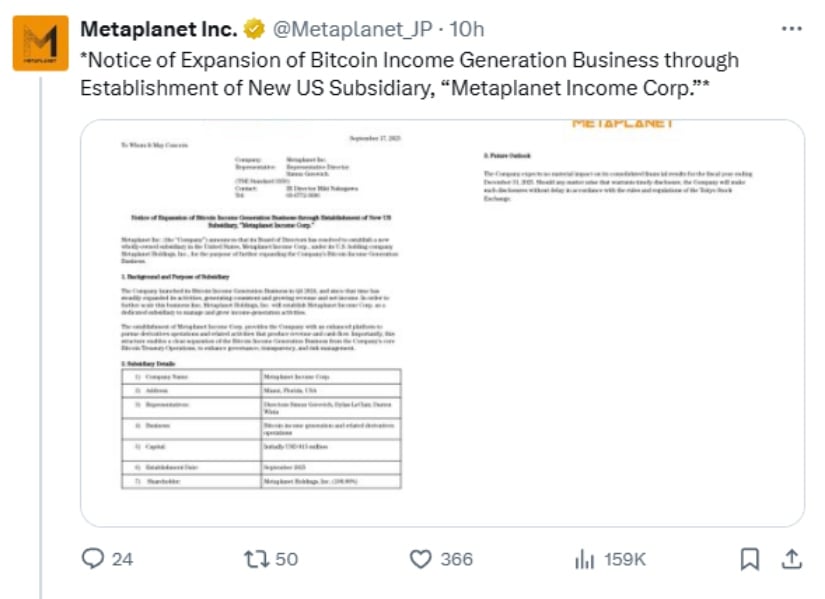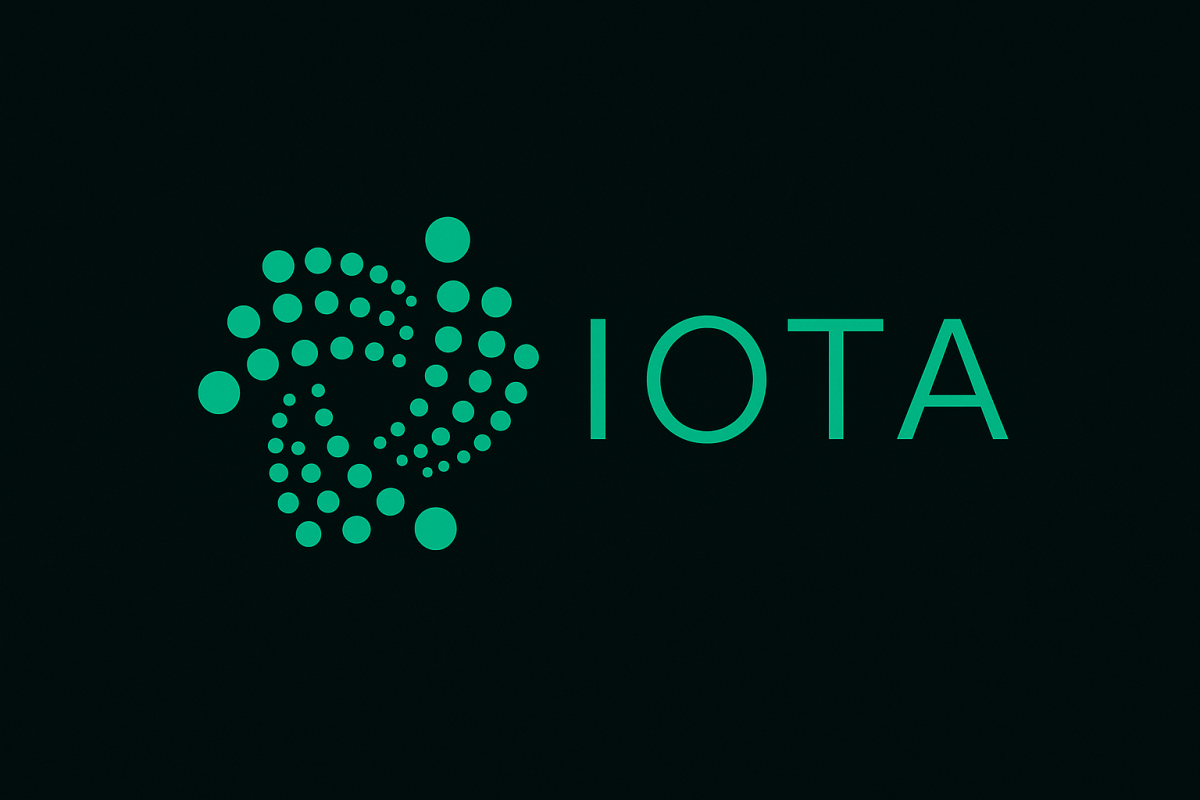A conversation with Cathie Wood: Why are Bitcoin, Ethereum, and Solana the ultimate choices?
Original Title: Cathie Wood Part II: Why Bitcoin Will Always Be #1 Cryptocurrency
Source: The Master Investor Podcast with Wilfred Frost
Compiled and edited by TechFlow
Guest: Cathie Wood, Founder and CEO of Ark Investment
Moderator: Wilfred Frost
Air Date: September 27, 2025
Summary of key points
Cathie Wood, founder and CEO of Ark Invest, shared her conviction that Bitcoin will become the leading cryptocurrency and elaborated on the crucial role of stablecoins in the crypto ecosystem. She also discussed her friendly disagreement with Fundstrat's Tom Lee. While she believes Ethereum will not surpass Bitcoin, her stance on the platform has evolved, including her recent investment in BitMine.
Cathie also discusses the potential impact of gold's recent strong performance on the cryptocurrency market and the broader financial markets. She offers valuable insights into navigating the challenges of this rapidly evolving landscape, helping investors better grasp market trends and investment opportunities.
Summary of highlights
Ark's main investment directions are Bitcoin, Ethereum and Solana.
There aren't many truly promising cryptocurrencies. In the pure cryptocurrency space, Bitcoin dominates. Besides that, there are also stablecoins, which are also cryptocurrencies.
Bitcoin has three key roles. First, it is the foundation of the global monetary system. Second, as a Layer 1 (L1), it has never been hacked. Third, it is the pioneer of the crypto asset space.
We are also keeping an eye on emerging projects like Hyperliquid, which is reminiscent of Solana’s early days but is starting to prove its worth and compete with the industry’s biggest names.
We will also be looking at other services like money market funds and projects related to the Solana ecosystem like Jito.
We don’t invest in gold, but that doesn’t mean it’s a bad investment.
The value of stablecoins
Wilfred Frost: I heard that you are a staunch supporter of cryptocurrencies. Do you believe in all cryptocurrencies, or are you confident in certain ones?
Cathie Wood: We don't believe all cryptocurrencies have potential. In fact, we don't think there are many truly promising cryptocurrencies. In the pure cryptocurrency space, Bitcoin dominates. Beyond that, there are stablecoins, which are also cryptocurrencies but primarily pegged to the US dollar because they're typically backed by government bonds. Therefore, we believe Bitcoin is the only true cryptocurrency and will be the largest in the market. Bitcoin is a rules-based monetary system whose rules follow the quantity theory of money. The total supply of Bitcoin is capped at 21 million, with approximately 20 million currently in circulation. This is known as the quantity theory. Stablecoins, on the other hand, are digital assets backed by the US dollar. If you can find a way to use stablecoins, such as in DeFi, you can earn a yield. Just last week, Coinbase launched a product that allows users to lend USDC to others in the DeFi ecosystem. While these loans don't earn traditional interest payments due to regulatory regulations, users can still earn up to 10.4% in yield.
Wilfred Frost: I'd like to learn more about stablecoins. I understand why easily transferable, dollar-denominated assets might be attractive. For example, in some countries, stablecoins might be used to mitigate the risk of asset confiscation. But for someone living in London or New York, what's the rationale behind using stablecoins? After all, dollars or pounds are easily transferable, earn interest, and are backed by central banks and governments. What are the advantages of using stablecoins in these countries?
Cathie Wood: You're right. There are currently two main stablecoins in the market: Tether and Circle. Tether primarily circulates outside the US and Europe, while Circle has stronger regulatory compliance in the US. Circle also launched the euro-backed USDC stablecoin, but it's not widely used yet. In Europe, with the implementation of Mica (a regulatory framework for cryptoasset markets), Tether and Circle have captured 90% of the stablecoin market.
So why do people in developed countries also need stablecoins? We understand the need in emerging markets. For example, in economically unstable countries, people can use stablecoins to protect their wealth. We once believed that Bitcoin would play this role, but the emergence of stablecoins has indeed taken away some of the Bitcoin market, which was not anticipated in our initial analysis.
In the world of blockchain technology, we are gradually eliminating the role of intermediaries in financial services. I used to jokingly call these intermediaries "toll booths." Their purpose is to reduce transaction risks and protect the security of transactions between financial institutions. However, in the peer-to-peer transaction model of blockchain, these intermediaries will be completely replaced. Simply put, traditional credit card transactions typically charge a 2.5% processing fee, which represents the cost of intermediaries. Blockchain-based transaction fees can be significantly reduced. In developed countries, these fees could drop from 2% to 4% to below 1%. In emerging markets, such as Nigeria, remittance fees can be as high as 25%, and these fees are also expected to be significantly reduced. Ultimately, blockchain technology will reduce global transaction costs to extremely low levels.
Wilfred Frost: Where are these fees currently? Because the mining and transaction costs of cryptocurrencies are still far from being reduced to 1%.
Cathie Wood: These changes take time to materialize. For example, I just mentioned the example of USDC. Someone said, "I can borrow money at 10.4%, right? I can't get that rate anywhere else." This is a high-yield way for savers to save. Those borrowing at 10.4% are often too small to get a bank loan. DeFi is changing that, making loans accessible to those who previously struggled, while also providing higher returns for savers.
The on-chain ecosystem is remarkably transparent, and many loans are overcollateralized. We've learned this from cryptocurrency debacles like 3AC and Luna. On a blockchain, anyone whose collateral is insufficient in value is automatically liquidated, meaning financial institutions can quickly recover funds. In an opaque and highly centralized system like FTX, funds can be completely lost. Therefore, from a security perspective, on-chain transparency is actually more reliable than FTX, a clearly fraudulent company.
Bitcoin's key role
Wilfred Frost: A few weeks ago we interviewed Tom Lee, a Bitcoin supporter who is more optimistic about the future of Ethereum. He believes Ethereum will surpass Bitcoin in size. Why do you think he's wrong? Why will Bitcoin always be more important than Ethereum?
Cathie Wood: Bitcoin has three key roles. First, it serves as the foundation of the global monetary system, governed by strict quantitative rules. This is a very important concept in itself. Second, as a first-layer blockchain technology, it has never been hacked, something other blockchains cannot claim. This is why Bitcoin is the basis of the monetary system. Third, it is a pioneer in the field of crypto assets. We wrote the first white paper for Bitcoin as early as 2016. These attributes give Bitcoin unique advantages.
However, Ethereum also plays a significant role in the decentralized finance (DeFi) sector. Ether is the native currency within the DeFi ecosystem, and many transaction fees flow to second-layer scaling solutions, such as Robinhood's recent announcement of its own second-layer network, similar to Coinbase's Base. These second-layer networks capture a disproportionate share of fees. The question now is whether, as second-layer networks proliferate, they will compete with each other, increasing the importance of the first layer. This is a trend worth watching and one of the reasons we invested in Ethereum. Nevertheless, I believe these competing relationships are something Tom and I could discuss in depth.
Focus on Bitcoin, Ethereum, and Solana
Wilfred Frost: Are there many other cryptocurrencies that you think are worth investing in, or are there really only a few?
Cathie Wood: There are only a few cryptocurrencies worth watching right now. Within our public fund, we primarily invest in Bitcoin and Ethereum. These transactions are public, so I can tell you that we've found a regulatory-compliant way to invest in Ethereum. We've also selected Bitcoin mining companies as a significant investment area.
Besides Bitcoin and Ethereum, Solana is the third project we're focusing on. Solana's investment is through Brara Sports. Some people believe that Ark or I acquired sports teams, but that's not the case. Brara Sports is a company that is partnering with the Solana Treasury and is backed by the UAE. These partnerships have made Solana's role even more significant.
These three cryptocurrencies are our primary investment areas. We're also keeping an eye on emerging projects like Hyperliquid. This project, reminiscent of Solana's early days, is already proving its worth and gradually competing with established players in the industry.
We will also pay attention to other services, such as money market funds, and projects related to the Solana ecosystem, such as Jito. Although these derivative projects are important, if you ask us about our main investment directions, it is still Bitcoin, Ethereum and Solana.
Why is gold rising?
Wilfred Frost: Gold has clearly performed very well this year. Do you think the investment case for gold is stronger now than ever? What is your position on gold relative to Bitcoin?
Cathie Wood: We don't invest in gold, but that doesn't mean it's a bad investment. It's just that gold doesn't align with our focus on technological innovation. We're more focused on technology-driven disruptive innovation. However, from an economic perspective, I always take gold's market performance seriously. Typically, a rise in gold prices signals the arrival of inflation, but this seems to be different.
We monitor an indicator called the Metals to Gold Index, which measures the ratio of metal prices to gold prices. Currently, this ratio has fallen below 0.8 to 0.9. This concerns me, as there may be deeper reasons behind this. This may be related to the Chinese economy, which is still experiencing a deflationary adjustment caused by real estate speculation. Furthermore, I believe this rally in gold is more influenced by geopolitical risks.
For example, the H-1B visa policy chaos that occurred last Friday night has unsettled many, especially foreign students from India and China and their parents, who may be wondering, "What's next?" Personally, I believe this is simply a negotiation between the US and India that will ultimately be resolved. After all, the US doesn't want to lose talented global talent, despite the current rhetoric that may be causing concern. But in these situations, with the news media's extensive coverage of these events, people are starting to wonder, "How should I respond?" Some wealthy investors, especially those of older generations, may choose to shift their funds into gold rather than digital assets.
You May Also Like

Meme Coins Price Prediction: Dogecoin, Shiba Inu, and Pepe extend corrections as market sentiment turns cautious

Japanese Bitcoin Giant Metaplanet Raises $1.4 Billion to Enter U.S. Market
